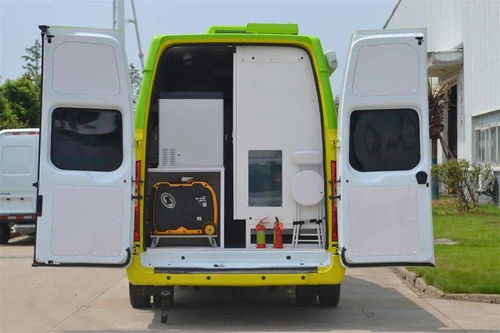核酸检测机构股票
Title: Opportunities and Considerations for Investing in Nucleic Acid Testing Vehicle Conversion Stocks
Introduction:
The COVID19 pandemic has significantly increased the demand for nucleic acid testing (NAT) to help identify and track the spread of the virus. As a result, there have been growing opportunities within the market for companies involved in the conversion and modification of vehicles for mobile NAT testing. Investing in stocks related to this industry requires careful consideration and understanding. This article aims to provide insights and guidance for individuals interested in investing in nucleic acid testing vehicle conversion stocks.
1. Market Overview:
The growing need for convenient and accessible NAT testing has prompted the development of mobile testing vehicles. These vehicles are equipped with highprecision testing equipment, such as PCR machines, and can be deployed to various locations to improve testing efficiency and accessibility. The market for nucleic acid testing vehicle conversions is still evolving, presenting potential investment opportunities for early adopters.
2. Identify Key Players:
Research and identify companies that specialize in the conversion and modification of vehicles for nucleic acid testing. Assess their track record, reputation, and financial stability. Evaluate their expertise in vehicle modification, their partnerships with NAT testing laboratories, and their ability to adapt to changing market demand. Some key players in this industry include wellestablished automotive modification companies and emerging startups.
3. Assess Market Potential and Growth:
Consider the current and future demand for mobile NAT testing vehicles. Evaluate the potential for growth based on factors such as government regulations, healthcare infrastructure, and the ongoing need for expanded testing capabilities. Analyze market projections and forecasts to gauge the potential profitability and sustainability of investing in nucleic acid testing vehicle conversion stocks.
4. Competitive Advantage:
Look for companies that offer a competitive edge in the market. This could include proprietary technology, innovative vehicle designs, strategic partnerships, or a strong network of clients and suppliers. A company's competitive advantage can be a crucial factor in determining its longterm success and potential for investment returns.
5. Evaluate Risks:
Investing in any industry carries inherent risks, and nucleic acid testing vehicle conversion stocks are no exception. Consider potential risks such as regulatory changes, market saturation, technological advancements that may render existing vehicle designs obsolete, or unexpected events like the end of the pandemic. Diversifying your investment portfolio and conducting thorough risk assessments can help mitigate these risks.
6. Monitor Industry Developments:

Stay informed about industry trends, advancements in NAT testing technology, and changes in government regulations. Regularly monitor financial news, industry publications, and corporate announcements from relevant companies. This information will help you make informed investment decisions and stay ahead of market developments.
7. Seek Professional Advice:
Consider consulting with a financial advisor or investment professional with expertise in the healthcare and automotive sectors before making investment decisions. They can provide valuable insights, help you evaluate the potential risks and returns, and assist with portfolio diversification, considering your individual financial goals and risk tolerance.
Conclusion:
Investing in nucleic acid testing vehicle conversion stocks requires careful analysis and understanding of the market dynamics, key players, potential growth, and associated risks. By conducting thorough research, monitoring industry developments, and seeking professional advice, investors can make informed decisions to capitalize on the opportunities presented by this emerging industry. Remember, as with any investment, it is essential to diversify your portfolio and consider your individual investment goals and risk tolerance.
股市动态
MORE>- 搜索
- 最近发表
-
- 柳钢股份股吧,投资者的交流平台与信息宝库
- 通化金马股吧,投资者的交流平台与信息集散地
- 成都金宇集团,西南经济的璀璨明珠成都
- 探索和讯黄金网,黄金投资的数字化时代
- 雷亚尔对人民币汇率,理解货币兑换的艺术
- 长江电力股份,能源巨轮,照亮未来
- 探索福州市房产交易中心,房产交易的桥梁与指南
- 深入解析基金000001,投资小白的入门指南
- 高盟新材股票,分析、前景与投资建议
- 亚夏汽车股票,投资潜力与市场前景分析
- 深入解析,保险代理人资格证的重要性与获取路径
- 海王英特龙,探索深海的神秘生物
- 保护您的数字资产,了解和使用交易密码的重要性
- 中国平安常青树,稳健投资的典范
- 天安保险股份有限公司,引领行业的创新与服务
- 股票600015,投资界的宝藏还是陷阱?
- 邮票交易所,收藏爱好者的天堂
- 河池化工,化工行业的璀璨明珠
- 江苏银行理财产品,投资智慧与财富增长的桥梁
- 三一重工的全球扩张,收购战略如何塑造未来





